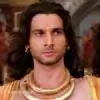For many of you this might be taxing to read or you might already know. If you are interested you are more than welcome to go over.
Life Span of Brahma and Time
The Life-span of Lord Brahma was determined at hundred Divine years
Calculation of each year was conceived as follows beginning from the minimum measure of Time upwards:
3 nimeshas or blinks make = 1 Kshana
15 nimeshas = 1 kashtha
30 kashthas = 1 kala;
30 kalas = 1 Muhurtha (Heard of Bramha Muhurtham etc, Marriage Muhurtha !)
30 Muhurthas = 1 day-night
30 day-nights = 1 Paksha
2 Pakshas = 1 maasa
6 maasas = 1 Ayana
2 Ayanas make = Varsha or a 1 human Year. (Ayanas in a Year are Dakshina Aayana and Uttara Ayana)
1 human Year comprising three sixty five day-nights or Ahorathras = 1 Divya Ahoratra (Divine day-night)
i.e 1 Uttarayan is a Divine Day and 1 Dakshinayan is a Divine night. One Divya Day-night thus is a full day-night year for human beings.
Have you heard of Devas and pitrs having 1 day = 1 human year ?
On the North pole it is six months day and six months night. We must have been taught this in our primary classes.
The North Pole is called Sumeru and the South Pole Kumeru (Sumeria is from Sumeru. In that land, it is said, the Vedic gods were worshipped. Just as the North pole is the abode of the Devas, the South pole is the abode of the pitrs. Hence, They have 1 Divya Day-night (1 human year)
To see the Devas and the pitrs who are in the form of spirits and the denizens of hell one must obtain divine sight through yoga. Merely because we do not possess such sight we cannot deny their existence.
Some history
Is the Pole star directly opposite to it ? The Answer is No.
Eons ago, scientists explain,it was so.
But later big changes took place and the earth tilted (axial tilt of 23.5 degree). Only because of this tilt we have seasons and climatic changes.
Sastras refer to a time when the Pole star was directly opposite the North Pole and at that time the seven islands and the seven oceans must have existed. When the rotating earth tilted a bit the oceans must have got mixed and become salty and in the process the seven islands must have become the five continents.
Let us imagine that this earth is a lemon. A spot on its top is the Meru peak. In relation to that spot any other part of the citrus fruit is south. Where can you go from there, east or west? You can go only south. i.e It can be South east or South West.
Sarvesaamapi varsanam Meruttaratahsthitaha
For all countries of the earth, for all "varsas", north is Meru. The place above the North Pole is Meru where we have our svarga or paradise. Let me NOT digress further
Back to our Time divisions
As per Divya calculations,
Total count of Four Yugas (Chatur Yugas) = twelve thousand years
Satya Yuga = four thousand Divya years
Treta Yuga = three thousand Divya Years
Dwapara Yuga = two thousand years
Kaliyuga = one Divya thousand years;
The rest of two thousand years of the twelve thousand Divine Years is accounted for additional four hundred of Divine years of Sandhya
and an equivalent period additionaly for Sandhyamsha for Satya Yuga
three hundred years each for these periods in respect of Treta Yuga
two hundred years each of Dwapar Yuga and
one hundred years each of Kali Yuga.
In Lord Brahma's life span of One hundred Divya Years, each day comprises 14 Manvantaras and each night 14 Manvantaras. One Day for Brahma is 2 Kalpas. One Kalpa is 14 Manvantaras. At each change of Manvantara, there is a fresh stock of Indras, Devas, and Sapta Rishis etc.
There are seventy one Cycles of Four Yugas in each Manvantara. Viewed from the view point of human years,
one Manvantara has three crore sixty six lakh two thousand years;
by Divine Years, one Manvantara has one lakh fifty two thousand years.
If this Period is multiplied four times, it would then equate Brahma's one day, that is, one million nineteen lakh twenty seven thousand Divya years; or, four twenty nine crores forty lakh (429, 40, 00,000) human years!
After each day-night of Brahma, there occurs a Naimittika Pralaya. The residents of Bhulok, Bhuvarloka and Swarloka then get shifted to Maharloka and the residents of Maharloka would get tranfferred to Janloka and Tribhuvanas or allthe Three Bhuvanas become Ekarnava or replete with water and Brahma goes to sleep overnight. On the following day, Brahma starts Creation afresh; this is how every year of three hundred sixty days, Brahma's each year, there would be a MahaPralaya.
As of now, Brahma's age is past fifty years or one Parartha' plus; that is how one reckons that the Dwitheeya Parartha is on going in the Kali Yuga's Prathama Paada', in Sveta Varaha kalpa which followed the Padma kalpa. We are in Vaivaswatha Manvantara. If Priests do samkalpa, if you have heard it closely or done it yourself you will realize all this is clearly spelt out as part of it. Samkalpa tells exact time and location of where we are performing whatever ritual/samskara.
At the end of the Padma Kalpa, when Brahma recovered from sleep, he found the entire surroundings were full of water and he realised:
Aapo Naaraa Iti prokta aapovai Narasunavah
thasu shetey sa yasmamcha thena Narayanah
Naara is Jalaa (water). Since Lord Vishnu sleeps over it and thus He is known as Narayana
Thus Brahma felt that Lord Vishnu must be engaged in lifting Earth from the deep waters of Patala' by assuming the Avatar of Varaha and this scene was witnessed by the residents of Janaloka Maharshis. When Prithvi was steadying in water like a ship, the Brahma commenced Srishti with Mountains, followed by Sapta Dweepas' and kept on meditating further as in the earlier Kalpa - Padma Kalpa.
He materialised Five Avidyas namely. Tamomaya, Tamah, Moha, Mahamoha, Tamisra and Andhakamishra.
Prathama Sarga of Srishti (the first Stage of Creation) was essentially of Mountains,
Brahma meditated further but the Second Sarga too was not satisfactory as that had the feature of Ahamkari Srishti of Agyan' which was the resultant of Tamo Guna and was primarily of animals. Once again Brahma meditated with Satvik Guna and the outcome was the creation of the Deva sarga as He was highly satisfied in the Third Sarga.
In the Fourth sarga, Brahma created Human Beings as a result of the Rajo Guna and the resultant dominance of Duhkha (unhappiness).
The Fifth Sarga is known as Anugraha (Blessing) featuring Viparyaya Siddhi (Fulfilment) and Shanti (Peace).
The Sixth Sarga deals with the creation of those who know the past and present; these are the Bhutas' and Bhutadhikas' ; the latter are those who have the features of inspiring and getting inspired, who have great interest in various matters and have narrow mind and thinking.
There is much more to this, To be continued ... Next part will be very less numbers 😊
I will continue based on your responses and if you would want me to.




























